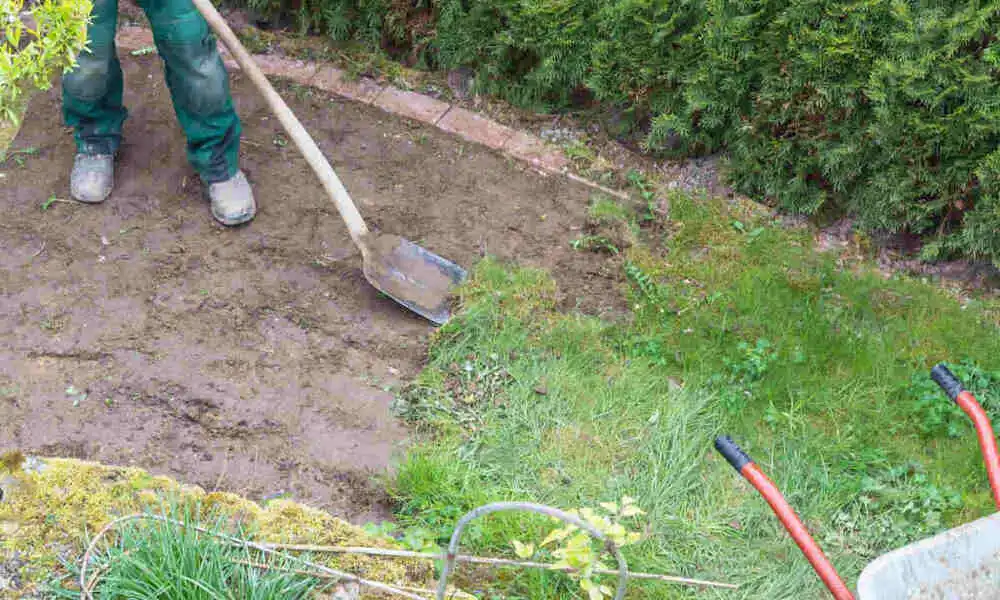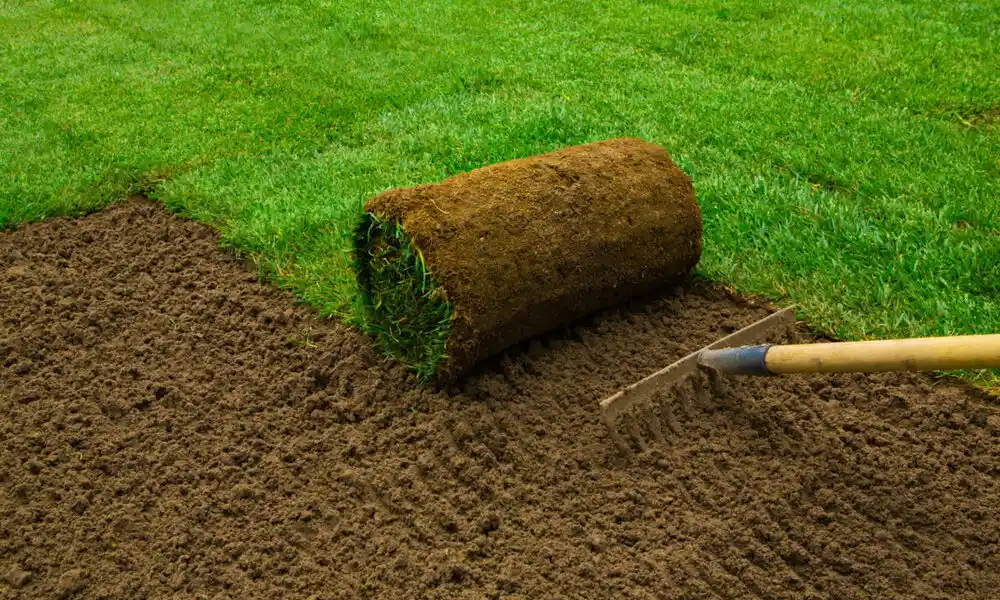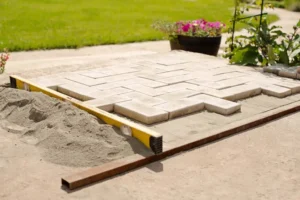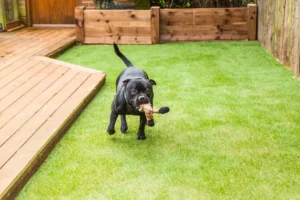How to remove turf effectively starts with understanding why you might need to take this step in the first place. Whether you’re planning to upgrade your yard with artificial turf, convert to drought-tolerant xeriscaping, or completely renovate your outdoor space, lawn removal becomes a crucial first task. Many homeowners and landscapers opt for removing grass to improve soil conditions, conserve water, or make room for more sustainable landscaping solutions. Choosing the right turf removal method and having the proper tools on hand can make the process smoother, faster, and more environmentally friendly setting the stage for a successful landscape transformation.
Why Remove Turf Grass?

Removing turf grass is a common step in many landscaping projects, especially for homeowners looking to improve outdoor spaces, conserve resources, or make way for upgrades. Here are the typical reasons why you might consider grass removal.
Reduce Water Usage
Turf grass requires constant watering to stay green, especially in hot climates like California. Many homeowners are removing turf grass to save on water bills and comply with local drought regulations. By removing turf by hand or using other eco-friendly methods, you can significantly lower your water usage and support a more sustainable landscape.
Prepare For Artificial Turf
Before installing artificial turf, proper grass removal is necessary. Removing turf by hand ensures the area is clear of roots and debris, creating a smooth, stable surface for artificial turf. This step helps prevent uneven surfaces, weed growth, and drainage issues later on.
Fix Poor Soil Conditions
Sometimes, turf grass fails to thrive due to compacted or nutrient-poor soil. In these cases, removing turf by hand allows you to access and treat the underlying soil. After removal, the soil can be aerated, amended, and regraded for healthier plant growth or better drainage.
Landscape Redesign
When reimagining your outdoor space, grass removal is often the first step. Whether you’re planning a drought-tolerant garden, a new patio, or a fresh layout, removing turf opens up design possibilities. Removing turf by hand offers precise control, especially in areas near trees, flower beds, or walkways.
Removing turf grass isn’t just about taking out the green it’s about creating a more efficient, beautiful, and functional landscape.
Tools And Materials For Removing Turf Grass
Successfully removing turf by hand or with equipment requires the right tools and materials. Here’s a list of essential items and what each one is used for in the grass removal process.
Shovel or spade
Used to cut and lift sections of turf. A sharp spade helps define edges and makes it easier to dig under the grass roots.
Pickaxe or mattock
Helpful for breaking up compacted soil or rocky areas beneath the turf. It loosens the ground and makes turf easier to remove.
Sod cutter (manual or gas-powered)
Ideal for larger areas, a sod cutter slices turf at the root level, allowing you to roll and remove it efficiently.
Rake
Used to clear leftover roots, debris, and to smooth out the soil after turf has been removed.
Wheelbarrow
Makes it easy to haul away removed turf, soil, and debris. It saves time and reduces strain during cleanup.
Gloves and safety gear
Protect your hands from blisters and cuts. Safety gear like boots and eye protection is also important for working with sharp tools and rough materials.
Having the right tools on hand makes grass removal more efficient, safer, and less physically demanding.
You may read How To Design A Landscape Plan?
Methods For Removing Turf Grass

There are several effective ways to handle lawn removal based on your landscape size, tools, and goals. Below are the most common methods for removing grass, including both manual and low-effort techniques.
A. Dig and flip method (beginner-friendly)
This is one of the easiest ways for homeowners to start removing grass without special tools.
Step-by-step process:
- Use a shovel or spade to cut the turf into manageable sections
- Dig underneath the grass and lift each section
- Flip the turf over so the grass side is face-down
- Leave it to decompose naturally
best for: small to medium-sized lawns
How to compost or reuse flipped turf:
Cover flipped turf with compost or mulch to speed up decomposition. Over time, it will break down into nutrient-rich soil you can reuse in garden beds.
B. Manual removal with shovel or spade
This traditional lawn removal method gives you more control, especially around edges or tight spaces.
Step-by-step guide:
- Water the area lightly a day before to soften the soil
- Slice around the perimeter with a sharp spade
- Slide the spade underneath the turf to lift it in sections
- Roll or stack the removed turf for disposal or reuse
Tips for slicing roots cleanly:
Keep your spade sharp and angle it just beneath the roots for a clean cut. Work slowly to avoid tearing the turf or disturbing too much soil.
C. Using a sod cutter
For larger landscapes, a sod cutter is the most efficient tool for removing grass quickly.
when and how to use it:
Use a manual or gas-powered sod cutter to slice under the turf at root level. Walk in straight lines and adjust the blade depth as needed.
ideal for: large yards, commercial lawn removal, or preparing for artificial turf installation
D. Sheet mulching (smothering method)
This is an eco-friendly, no-dig method for removing turf without disturbing the soil structure.
Eco-friendly, low-effort option:
Lay down layers of cardboard or newspaper over the grass, then add mulch, compost, or soil on top.
Time required and layering process:
Sheet mulching takes 2–3 months to kill the grass completely. Start with a weed barrier (cardboard or newspaper), followed by 4–6 inches of organic mulch. Water the layers to help them settle and speed up decomposition.
Each method offers unique benefits depending on your project. Whether you’re removing grass for a garden bed, artificial turf, or a full lawn removal, choose the approach that matches your timeline and area size.
When To Require Professional Help
While removing grass can be a DIY project, there are times when hiring experts makes more sense for efficiency, safety, and long-term results. Here are key signs it’s better to work with professionals.
Turf covers a large or uneven area
If your lawn is expansive or sits on a slope, manual lawn removal becomes labor-intensive and time-consuming. Professionals have equipment like sod cutters and grading tools to handle these challenges with ease.
Time constraints
Don’t have the hours or days to dedicate to removing turf by hand? Hiring a landscaping team saves you time while ensuring the job is done right the first time.
You plan to replace turf with artificial grass
Installing artificial turf requires a clean base, proper soil compaction, and precise grading. Professional help ensures the grass removal process is thorough, setting the foundation for a smooth and long-lasting artificial turf installation.
Need for grading or drainage work
If your yard has pooling water, uneven surfaces, or drainage issues, simple turf removal isn’t enough. You’ll need expert grading and soil prep, which is best handled by trained landscape professionals.
How professionals speed up and improve results
Teams like Lakota Design Group use commercial-grade tools, follow industry best practices, and work efficiently to deliver high-quality outcomes. We handle everything from lawn removal to site prep and final design installation so you don’t have to lift a finger.
Looking for professional landscaping services in San Jose?
Contact Lakota Design Group today to schedule your consultation and transform your outdoor space with expert care.
Final Thoughts
Knowing how to remove turf properly sets the foundation for any successful landscaping project. Whether you’re planning to install artificial grass, create a drought-tolerant garden, or completely redesign your outdoor space, choosing the right lawn removal method is key to achieving lasting results.
If you’re considering a landscape makeover or need help with turf removal, soil preparation, or custom design, don’t go it alone.
For expert help in San Jose, contact Lakota Design Group your local professionals in landscape design, turf removal, and full-service outdoor transformations. Let’s bring your vision to life.
FAQs
What Is The Easiest Method For Removing Turf In A Small Yard?
The dig and flip method is beginner-friendly and perfect for small areas. You use a shovel to lift and flip the grass upside down, allowing it to decompose naturally over time.
Can I Remove Grass By Hand Without Using Machines?
Yes, removing turf by hand with a shovel or spade is completely doable for smaller spaces. It requires physical effort but gives you better control, especially near garden beds or walkways.
How Do I Remove Lawn Grass To Install Artificial Turf?
Start with complete lawn removal, using a sod cutter or shovel. Clear all roots and debris, then level and compact the soil. Proper base prep is essential before laying artificial turf.
What Tools Do I Need For Turf Grass Removal?
Common tools include a shovel, spade, pickaxe, sod cutter, rake, and wheelbarrow. Gloves and safety gear are also important to protect your hands and back during the process.
Is It Better To Hire A Professional For Grass Removal?
If your yard is large, uneven, or you’re short on time, hiring experts like Lakota Design Group is a smart choice. Professionals can handle turf removal, grading, and even prep for landscape redesigns.





